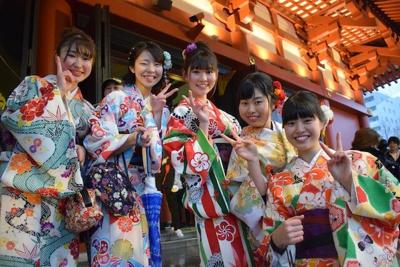The world of fashion always fuses cultures and traditions of the past with forward-thinking designs. Some of the best designers in the world create extravagant fashion that most of us simply dream of one day being lucky enough to come into contact with.
But one way to create a designer collection of your own and really be a trendsetter with fashion is by wearing a kimono. Designed with silky and lavish material and accented with stunning hand-crafted embellishments, the kimono is essentially a sophisticated bathrobe that any body type can look fabulous in.
You have likely seen fashion icons rocking the kimono for both red carpet events and their casual weekend errands. That is the great part about kimonos—you can literally wear them for any occasion.
But the evolvement of the kimono comes with ensuring that the traditions are not lost on us. In fact, kimonos have a deep history that is linked back to many centuries ago—dating all the way back to the Wu dynasty in China.
What’s a Kimono?
While the kimono was first linked back to the Wu dynasty and worn by powerful people, it was ultimately the Japanese who took ownership of the kimono. It is now considered a traditional Japanese garment that loosely fits over any other type of ensemble, or can be worn in the traditional way.
The kimono holds a whole depth of significance. Not only do kimonos represent status in the class system, but also indicate good fortune and prosperity. There are many types of kimonos, which are all a bit different and worn for various reasons.
While kimonos are linked directly to the Japanese culture, it is not just people from Japan that can now wear them. In fact, kimonos are quickly becoming a piece of clothing that everyone wants to own.
That is why it is important to understand the rules of respect when it comes to kimonos and ensure that these top tips are followed.
Rules to Respect Kimonos
Whether you are Japanese or not, it is important to understand how to wear a kimono and the best ways to ensure the culture and history remain preserved and respected. Here are the best rules to follow.
Tip One: It is Not a Costume
First, make sure that you wear a kimono as a legitimate piece of clothing, not as a costume. This perspective will influence the level of respect you naturally give off for the kimono and ensures that you will not end up offending anyone.
This means that if you are not Japanese, you do not attempt to be Japanese. Don’t put on make-up or wear accessories that you would not normally wear on a daily basis. Doing so is not recommended and could make you wearing a kimono come off as very offensive.
Tip Two: Know the Difference in Kimonos
The rules around wearing a kimono are largely influenced by the type of kimono you wear. If you choose to wear an authentic and traditional kimono that is traditional, then you want to ensure you wear it correctly. This means tying it with a customary obi belt and being mindful of what you wear underneath.
For example, if you are a male wearing a traditional Japanese kimono, you will want to make sure you wear the traditional Japanese trousers underneath as well.
On the other hand, if you are not wearing a traditional kimono, but rather a western adaptation of one, you will have more freedom with how you style it.
Tip Three: Make it Modern
If you want to respect the traditions and culture linked to the original kimono, then it is important to make your modern version of a kimono exactly that—modern. There is a whole range of cute style ideas that you can play with when creating a kimono-inspired outfit.
For example, you can wear a plain white t-shirt and jeans, layering your kimono on top. This is a great option for those warmer months where you want a layered casual look but do not want to get too overheated.
Tip Four: Wear it at Home
Another way to wear a kimono and ensure no one is offended is by being really casual with it at home. Kimonos are essentially really stylish bathrobes, so you can wear it as one in your own home exactly like that.
Kimonos at home go great over your pajamas or even your bikini. It can protect you from the sun and also keep you feeling cozy. However, this type of kimono should not be made of traditional silk, but rather breezy linen. There shouldn’t be the original twelve layers on this style either.
Conclusion
Wearing a kimono is a lot of fun. Just make sure you follow the above tips to make sure you are respecting the origins of where the kimono came.
Other Articles You May Enjoy on Asian Fashion
Top 6 Most Elegant Asian Traditional Male Clothing
The Hottest Swimsuit Cover-Up Trends




(0) comments
We welcome your comments
Log In
Post a comment as Guest
Keep it Clean. Please avoid obscene, vulgar, lewd, racist or sexually-oriented language.
PLEASE TURN OFF YOUR CAPS LOCK.
Don't Threaten. Threats of harming another person will not be tolerated.
Be Truthful. Don't knowingly lie about anyone or anything.
Be Nice. No racism, sexism or any sort of -ism that is degrading to another person.
Be Proactive. Use the 'Report' link on each comment to let us know of abusive posts.
Share with Us. We'd love to hear eyewitness accounts, the history behind an article.